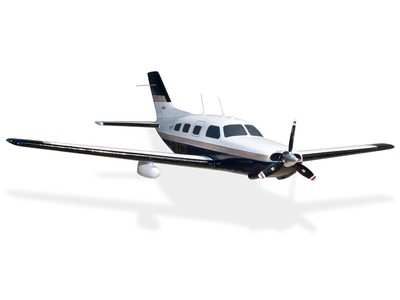Thu, Oct 20, 2011
Airplane Went Into The Water On Final Approach, Resulting In
Three Fatalities
Flying in instrument conditions at night over water will always
be challenging. In an accident which occurred over Thanksgiving
weekend last year, one such flight ended with the airplane in the
water in a bayou about a mile shore of the runway at
Destin, FL, and three people fatally injured. The NTSB on
Tuesday issued its probable cause report for the accident, saying
the pilot made improper decisions on approach which led to the
accident.

According to the probable cause report, the instrument-rated
pilot was executing a night instrument approach when the airplane
impacted the water. The published approach minimums for the area
navigation/global positioning system approach were 460-foot ceiling
and one-mile visibility. Recorded air traffic control voice and
radar data indicated that prior to the approach the pilot had
turned to an approximately 180-degree heading and appeared to be
heading in the direction of another airport. The controller
reassigned the pilot a heading in order to intercept the final
approach.
The airplane, a Piper PA-46-350P (Malibu Mirage), was located in
the water approximately 5,000 feet from the runway threshold. A
postaccident examination of the airplane revealed that the left
main landing gear was in the retracted position and the right main
and nose landing gear were in the extended position. Examination of
the left main landing gear actuator revealed no mechanical
anomalies. The pilot had likely just commanded the landing gear to
the down position and the landing gear was in transit. It is
further possible that, as the gear was in transit, the airplane
impacted the water in a left-wing and nose-down attitude and the
left gear was forced to a gear-up position.

The pilot, age 47, held a private pilot certificate with a
rating for airplane single-engine land and instrument airplane. His
most recent application for an FAA third-class medical certificate
was issued on February 18, 2009. The pilot's flight time log book
was recovered and the last entry was dated November 20, 2010. At
that time, his total flight experience was 407.5 hours; of which,
33.7 hours were in the same make and model as the accident
airplane. According to documentation, the pilot had completed a
flight review and instrument competency review on November 6,
2010.
The board said the probable cause for the accident was
"Controlled flight into water due to the pilot's improper descent
below the published minimum descent altitude."
More News
From 2023 (YouTube Versions): Flying Motorcycle, That Is… "First Flight was achieved under cloudy skies but calm winds. The Samson Sky team, positioned along the runway, wat>[...]
A Few Questions AND Answers To Help You Get MORE Out of ANN! 1) I forgot my password. How do I find it? 1) Easy... click here and give us your e-mail address--we'll send it to you >[...]
Discrete Code As used in the Air Traffic Control Radar Beacon System (ATCRBS), any one of the 4096 selectable Mode 3/A aircraft transponder codes except those ending in zero zero; >[...]
Beyond Visual Line Of Sight (BVLOS) The operation of a UAS beyond the visual capability of the flight crew members (i.e., remote pilot in command [RPIC], the person manipulating th>[...]
Aero Linx: Florida Antique Biplane Association "Biplanes.....outrageous fun since 1903." That quote really defines what the Florida Antique Biplane Association (FABA) is all about.>[...]
 Classic Aero-TV: The Switchblade Flying Car FLIES!
Classic Aero-TV: The Switchblade Flying Car FLIES! ANN FAQ: Q&A 101
ANN FAQ: Q&A 101 ANN's Daily Aero-Term (04.12.24): Discrete Code
ANN's Daily Aero-Term (04.12.24): Discrete Code ANN's Daily Aero-Term (04.13.24): Beyond Visual Line Of Sight (BVLOS)
ANN's Daily Aero-Term (04.13.24): Beyond Visual Line Of Sight (BVLOS) ANN's Daily Aero-Linx (04.13.24)
ANN's Daily Aero-Linx (04.13.24)




